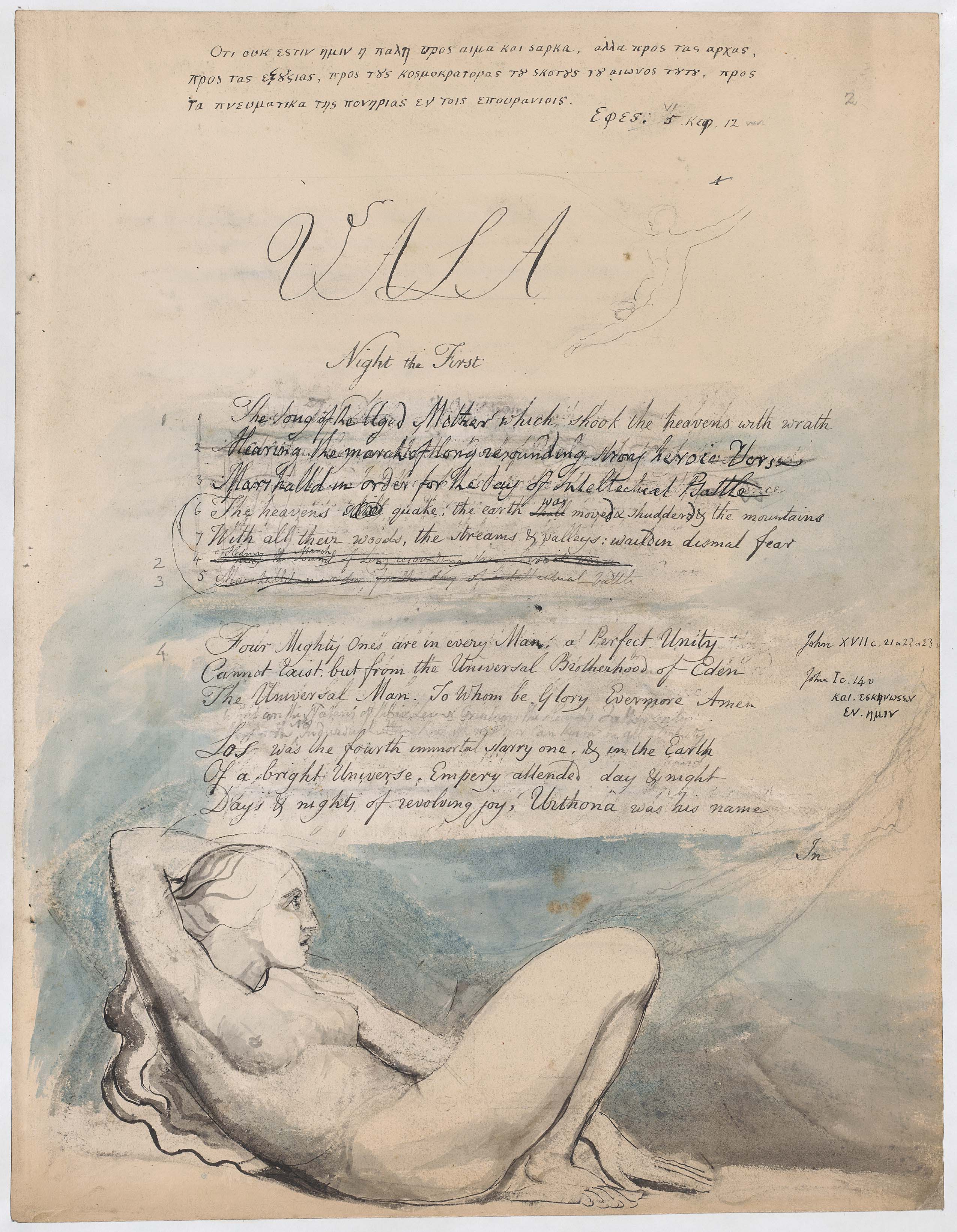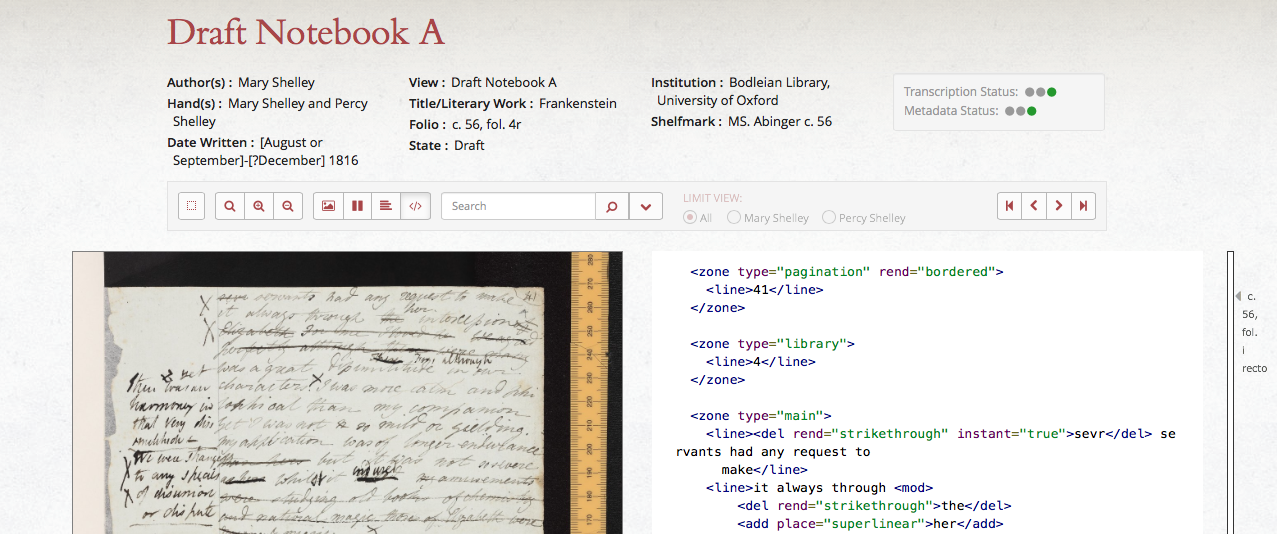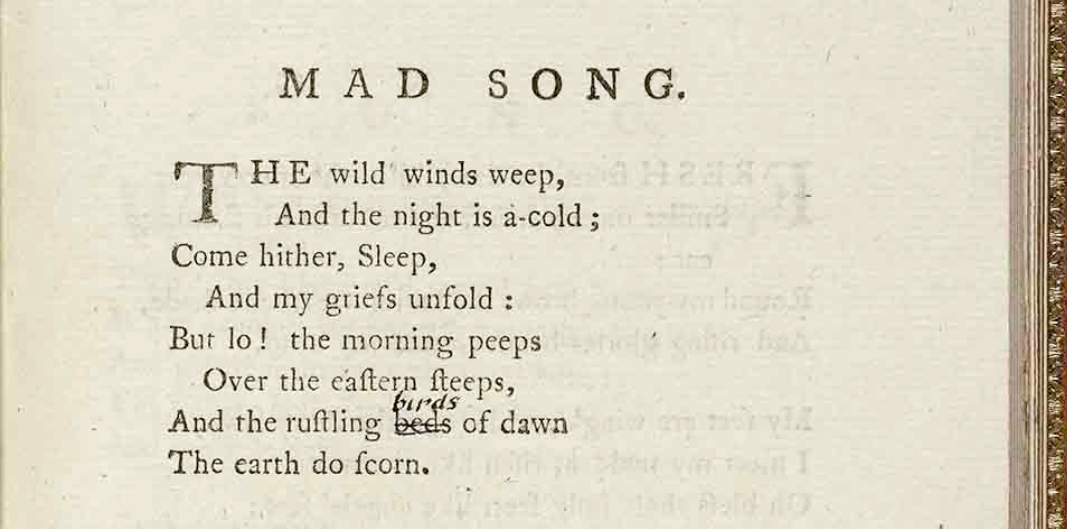A few of us at the Blake Archive are working on new markup strategies for the infamously difficult Blake manuscript known editorially as Vala, or the Four Zoas. There’s a great (great, great…) deal to be said–and will be said, eventually–about that project specifically, but first a note on some recent collaboration.
Our group was working on some new XML tags for Blake Archive manuscripts to account for FZ‘s multilayered, disparately laid-out composition. Just take a look:
We’re trying to construct a schema that can describe layered revisions in one location without necessarily connecting them to revisions in other areas. Our earliest attempts involve a combination of <stage> and <zone> definitions that Hardeep drafted. Laura then looked for precedent in the use of zone in recent projects.
Here’s where the collaboration comes in. Laura found some excellent examples of <zone> in the Shelley-Godwin Archive‘s markup of the Frankenstein notebooks. We particularly like <zone type=””> attributions, as we’re not sure at this point if we want to encode specific coordinates or link areas conceptually (or both). Either way, looking at the S-G examples helped us understand how <zone> was being used “in the wild” and how we might customize its usage for our project.
So it struck me that S-G became another partner in our group project simply by making their XML markup easily accessible as a display option on their site. Transparency of technology itself can be collaboration for DH projects, beyond useful content. Of course, “open-source” and “collaboration” are often preached as tenets of practicing DH–and there are ways of revealing digital markup through a variety of web tools–but S-G offers a useful example of how those philosophies can be incorporated into the actual design and function of a digital project.
—





